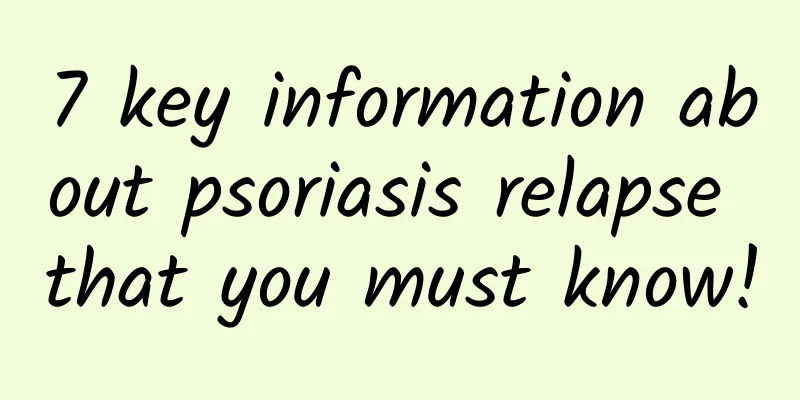Can exercise delay your period?

|
Generally speaking, exercise will not cause delayed menstruation, unless you continue to engage in strenuous exercise, which may affect the body's endocrine system. Delayed menstruation is a common type of menstrual disorder, but it is also a problem that many female friends do not pay attention to. Delayed menstruation is not a big problem. If it is affected by the body's endocrine system, just pay attention to adjusting your body. Can exercise delay your period? Irregular menstruation is a common gynecological disease in women, which is manifested by excessive or insufficient menstrual flow, irregular menstruation, etc. Bad living habits such as irregular work and rest, overeating, etc. can lead to changes in the endocrine environment, which can easily cause menstrual disorders in women. In addition, some gynecological diseases, uterine fibroids, endometrial polyps, etc. are all causes of irregular menstruation in women. Vigorous exercise or exercise that changes body position can easily cause menstruation to be disrupted. It is possible that menstrual blood cannot be discharged smoothly through the cervix and vagina, but instead reaches the pelvic cavity through the fallopian tubes, causing menstrual blood to flow back, resulting in the implantation of menstrual blood and active endometrium in the pelvic cavity. This disease is called endometriosis, which is prone to a series of complications, such as dysmenorrhea, dyspareunia, and even menstrual disorders, pelvic masses, infertility and other problems. For some female friends who suffer from irregular menstruation or even amenorrhea due to excessive exercise, if they do not feel particularly uncomfortable, they can stop excessive exercise or reduce the amount of exercise and the body will adjust itself. However, if you experience discomfort such as mood swings, unbearable abdominal pain, breast tenderness, etc., or if your menstrual condition does not improve after stopping excessive exercise for a period of time, you should seek medical intervention as soon as possible. Otherwise, prolonged amenorrhea may lead to dysfunction of the hypothalamic-pituitary-ovarian gonadal axis, thus affecting women's menstrual recovery and even reproductive dysfunction. Therefore, exercise to lose weight is good for the body, but it must be done in moderation. Exercise-induced amenorrhea is a type of hypothalamic amenorrhea, which is the body's response to strong external stimulation. Vigorous exercise is a strong form of stress. Under stress, the body produces corticotropin-releasing hormone, which activates the sympathetic nervous system and stimulates the pituitary gland to secrete stress hormones. Corticotropin-releasing hormone inhibits the secretion of gonadotropin-releasing hormone in the hypothalamus, leading to a decrease in gonadotropin secretion and causing amenorrhea. What are the symptoms of irregular menstruation 1. Early menstruation. Early menstruation means that the menstrual cycle is normal, but suddenly it becomes shorter than 21 days, and it occurs for more than 2 cycles in a row, but the menstrual volume is normal. 2. Delayed menstruation. Normally, menstruation is regular, but menstruation is delayed for more than 7 days, or even 40-50 days, and it occurs for more than two consecutive menstrual cycles, but the menstrual flow is normal. 3. Prolonged menstrual period. The menstrual cycle is normal, the menstrual flow is normal, but the menstrual period is prolonged, lasting more than 7 days, or even lasting 2 weeks. 4. Heavy menstrual flow. If the daily blood loss during menstruation is more than 80ml, or the menstrual volume is significantly increased compared to the usual amount, it is called heavy menstruation. 5. Small amount of menstruation. The menstrual cycle is basically normal, but the menstrual flow is significantly reduced, or even stops with a few drops; or the menstrual period is shortened to less than two days, and the menstrual flow is also light. 6. Mid-menstrual bleeding. Also known as intermenstrual bleeding and ovulation bleeding. Refers to bleeding that occurs between two regular menstrual cycles. 7. Dysmenorrhea. Dysmenorrhea is divided into primary dysmenorrhea and secondary dysmenorrhea. Primary dysmenorrhea refers to dysmenorrhea without organic lesions of the reproductive organs; secondary dysmenorrhea refers to dysmenorrhea caused by organic diseases of the pelvic cavity. |
<<: How to arrange sex during ovulation to get pregnant
>>: Delayed menstruation after ovulation bleeding
Recommend
National Safe Medication Use Month | Two familiar brothers: aspirin and amoxicillin
There was a news in 2018: A doctor at a health ce...
What are the common symptoms of ovarian cancer?
Ovarian cancer is a common gynecological tumor wi...
Stomach pain on the sixth day of medical abortion
Some female friends will start to have stomach pa...
What are the dangers of not treating ovarian cysts?
For women, ovaries are the most prominent feature...
What does uterine screening mainly check?
For everyone, regular physical examinations are v...
What are the symptoms of pubic folliculitis? Are you affected by these?
In daily life, women must pay attention to the hy...
What will happen if you keep crying during confinement?
After giving birth, women need to rest at home fo...
How to restore the tightness of the birth canal during normal childbirth
Many new mothers who have given birth naturally m...
What are the reasonable ways for women to lose weight?
Every woman pursues perfection, but a bloated bod...
Slight bleeding in the lower body
If there is slight bleeding in the lower body, it...
If the vaginal discharge is yellow and has an odor
Many female friends know that secretions are tran...
How long does it take to remove the ring?
Although the current era is developing rapidly, s...
How long does it take for menstruation to come normally after uterine curettage?
As society continues to develop, abortion has bec...
Can a girl have sex with her husband when she has her period?
Women's menstrual period is a very critical s...
White-collar workers should avoid bad habits and beware of breast cancer
Fashionable women, how many crises are hidden beh...









